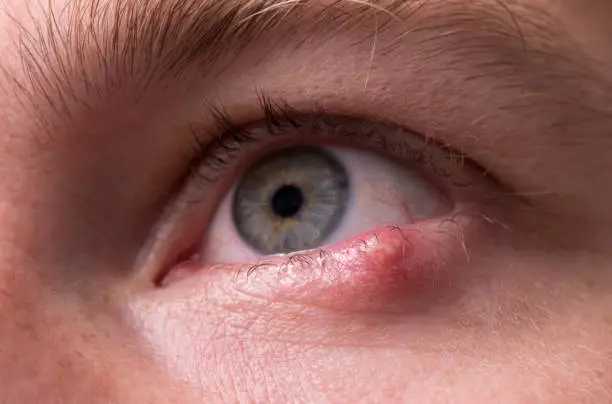What do you dream about Stye?

The dream of a stye in an oracle or predictive context can be interpreted in multiple ways based on different dream interpretation frameworks. Exploring these interpretations according to the insights of Miller, Vanga, Freud, and the Muslim Dreamer can provide a comprehensive understanding.
According to Miller's Dream Dictionary, dreaming about a stye symbolizes irritation or annoyance. A stye affects one's vision, often resulting in discomfort, which can be reflected in the dreamer's life as a situation or person who is causing similar feelings of frustration. It points to a need to address a particular issue that is bothering the dreamer. Miller would suggest that if you dream of having a stye, it might indicate an unresolved conflict in your waking life that needs attention. Furthermore, it might also signify a temporary setback in your plans, warning you to take a step back and reassess your current path. Confrontation or communication with those causing irritation may lead to resolution.
The famed Bulgarian clairvoyant Vanga interprets styes in dreams as a sign of emotional distress. A stye is often viewed as a manifestation of pent-up frustrations or unresolved feelings that the dreamer may not be confronting in their daily life. Vanga believed that such nightmares come as warnings, indicating that one needs to pay closer attention to their interpersonal relationships. Any turbulent relationships or hidden grudges may surface, leading the dreamer to delve deeper into their emotions. The dream may suggest that it's time to communicate openly with loved ones or resolve conflicts that may be causing lingering feelings of discomfort.
In contrast, Freud’s psychoanalytic approach suggests that dreams of a stye could symbolize a fear of judgment or scrutiny from others. The eyes are often connected to perception and self-image in Freudian theory. Thus, a stye—a condition that affects the eye—may symbolize the dreamer's anxieties about being seen or judged by others. Freud would assert that such a dream reflects deep-seated insecurities about how one presents themselves to the world. It could indicate a desire to hide away from social interactions due to a fear of not measuring up to the expectations of others, hinting at a need for self-acceptance and healing from a troubled self-image.
Meanwhile, the Muslim Dreamer perspective holds that dreams involving a stye could represent a form of spiritual oversight or malaise affecting one's clarity and direction. In Islamic dream interpretation, the eye is a powerful symbol representing insight and awareness. Thus, a stye could be seen as a hindrance to one's ability to see clearly, indicating that the dreamer may be undergoing a period of spiritual confusion or misguidance. It could suggest the need for repentance or seeking forgiveness, as well as the importance of rekindling one’s connection with faith to regain clarity and peace. The dream may serve as an encouragement to pray for guidance and to seek counsel from those who are wise.
Across all interpretations, the recurring theme is the idea of irritation, discomfort, and the need for self-examination and healing. Whether the annoyance is sourced externally—through interpersonal relationships—or stems from an internal struggle with self-worth and perception, the dream serves as a catalyst for introspection. For anyone experiencing this dream, the message is clear: prioritizing self-care and addressing underlying issues is essential for personal growth and emotional resolution.
Further, it is crucial to listen to one's inner voice and intimate thoughts; the stye may symbolize a blockage in communication or expression. As the dream unfolds, it is advisable to consider what aspects of life are causing distress and seek to elicit dialogue around these concerns. By doing so, the dreamer may relieve both physical and psychological burdens mirrored in their dreams.
In conclusion, dreaming about a stye encompasses varying interpretations, each offering unique insights into the dreamer's state of mind and emotional landscape. From Miller's emphasis on overcoming annoying setbacks to Vanga's focus on emotional clarity and Freud's reflection on self-perception, coupled with the spiritual dimensions emphasized by the Muslim Dreamer, the dream holds a rich tapestry of meanings. Each reflects the critical idea that dreams serve as both reflections and projections of our waking lives, encouraging a continual journey towards healing, self-awareness, and growth.




